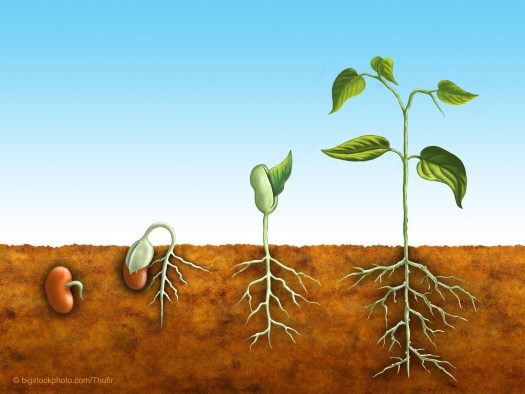
Plants use a wide range of methods to spread their seeds. Some plants have seeds encased in a shell or a fleshy bundle that various animals, including humans, like to eat. We are all familiar with nuts and fruits, but the basic design of these foods is to spread their seeds. We live in an area where poison ivy is a real nuisance, and getting rid of it this year won’t stop it from being a problem next year because birds eat the berries on the plant and replant the ivy all over our property. For good or bad, plants spread their seeds.
In our front yard, we have maple trees, and we all know about the helicopters that maple trees produce. We have cottonwood trees which have white flocculent packets that drift across the landscape carrying their seeds with them. We also have several plants with seeds encased in a bundle with barbs that stick to our clothes. Plants spread their seeds by many methods working together to make our world green and able to support a host of animal life.
Plants that shoot their seeds use one of the most interesting methods of seed disbursal. The seed pod in the picture is from the sandbox tree (Hura crepitans) nicknamed “the dynamite tree” because of the explosive way the pods burst open. In the segments of the pod, the outer and inner layers grow at different speeds. This creates tension as the surfaces push against each other. When the seeds are ready, the pressure becomes so great, that the capsule explodes. The sections that were initially convex rapidly flip to concave in a process known to engineers as snap-buckling. That explosion can shoot the seeds 100 feet (30 m) at speeds of 160 miles (257 km) per hour.
Some of us remember “jumping disks” we had as children. Two metals were fused together with the metals having different coefficients of linear expansion. If you rubbed the side of the disk with your finger making it hot, it would expand, and you could bend it, so the disk had tension produced and held by the expanded metal. As the disk cooled, it would eventually snap back to its original shape, causing it to jump into the air.
Scientists have tried since the time of Charles Darwin, who had a fascination with the Venus flytrap, to understand how a plant with no muscles could shoot seeds or snap closed to trap insects. It has only been in the last 20 years that high-speed cameras which can take 10,000 frames per second have allowed researchers to understand how this incredible design works.
Measurements of snapping plants show a g-force of 2400. Fighter pilots can handle about nine gs before passing out. A wide variety of designs allow plants to shoot seeds or snap shut to trap food. The American dwarf mistletoe uses a chemical heat system that explodes seeds. The wild petunia has 20 disk-shaped seeds in hooks. When the seed pod gets wet, it splits and launches the seeds like Frisbees, but much faster with revolution rates of nearly 100,000 rpm. The Venus flytrap apparently uses an electrical signal, but scientists are still studying it to learn exactly how it works.
Plants spread their seeds by many amazing mechanisms God has built into them, and which scientists are still trying to understand. Even more amazing is the complexity of the life-support systems on Earth that allow us to exist.
–John N. Clayton © 2018
For more on his topic, see “Physics of Rapid Movement in Plants” in Europhysics News
and a wonderful article “Meet the Speedsters of the Plant World” in Science News



